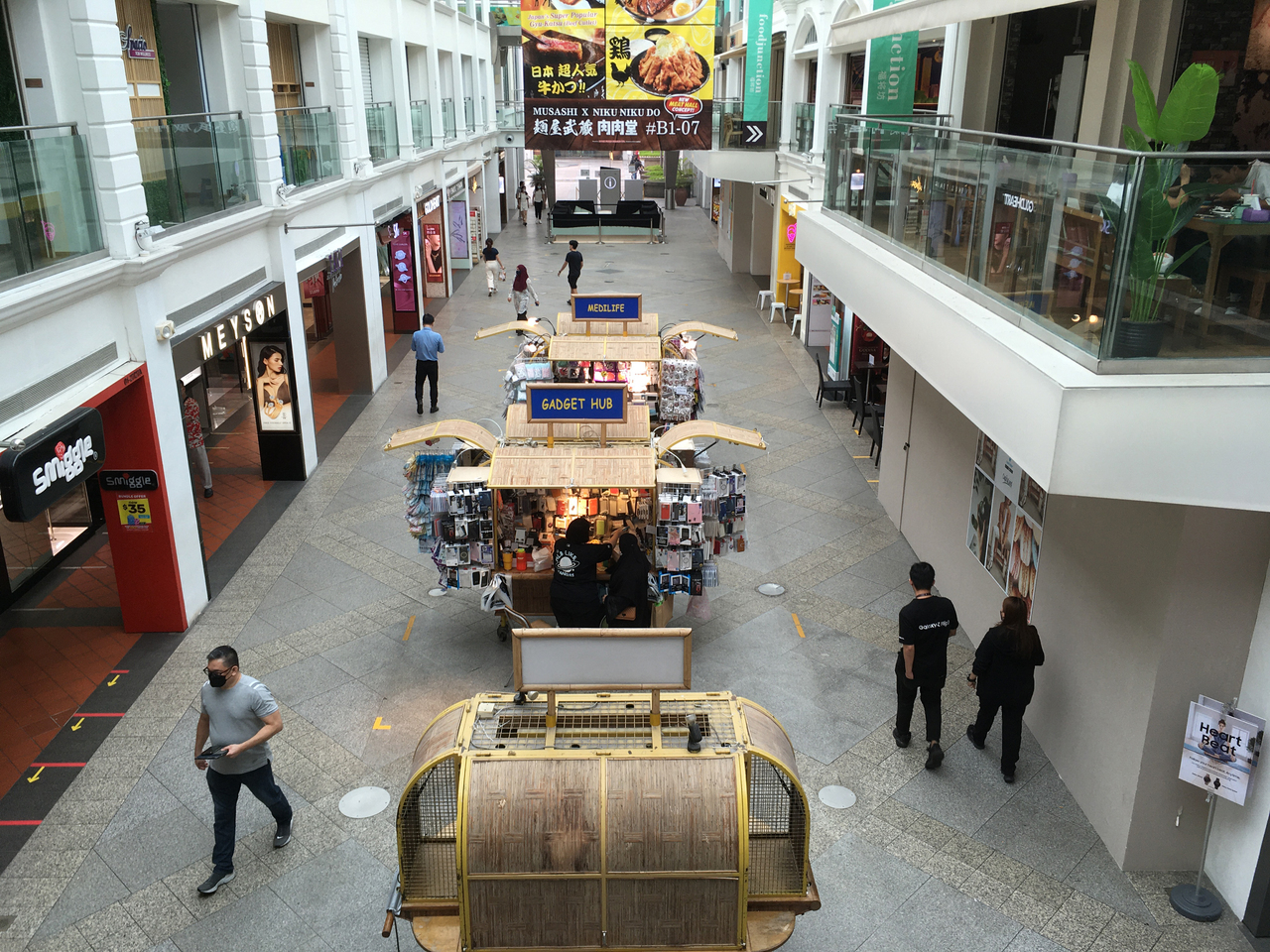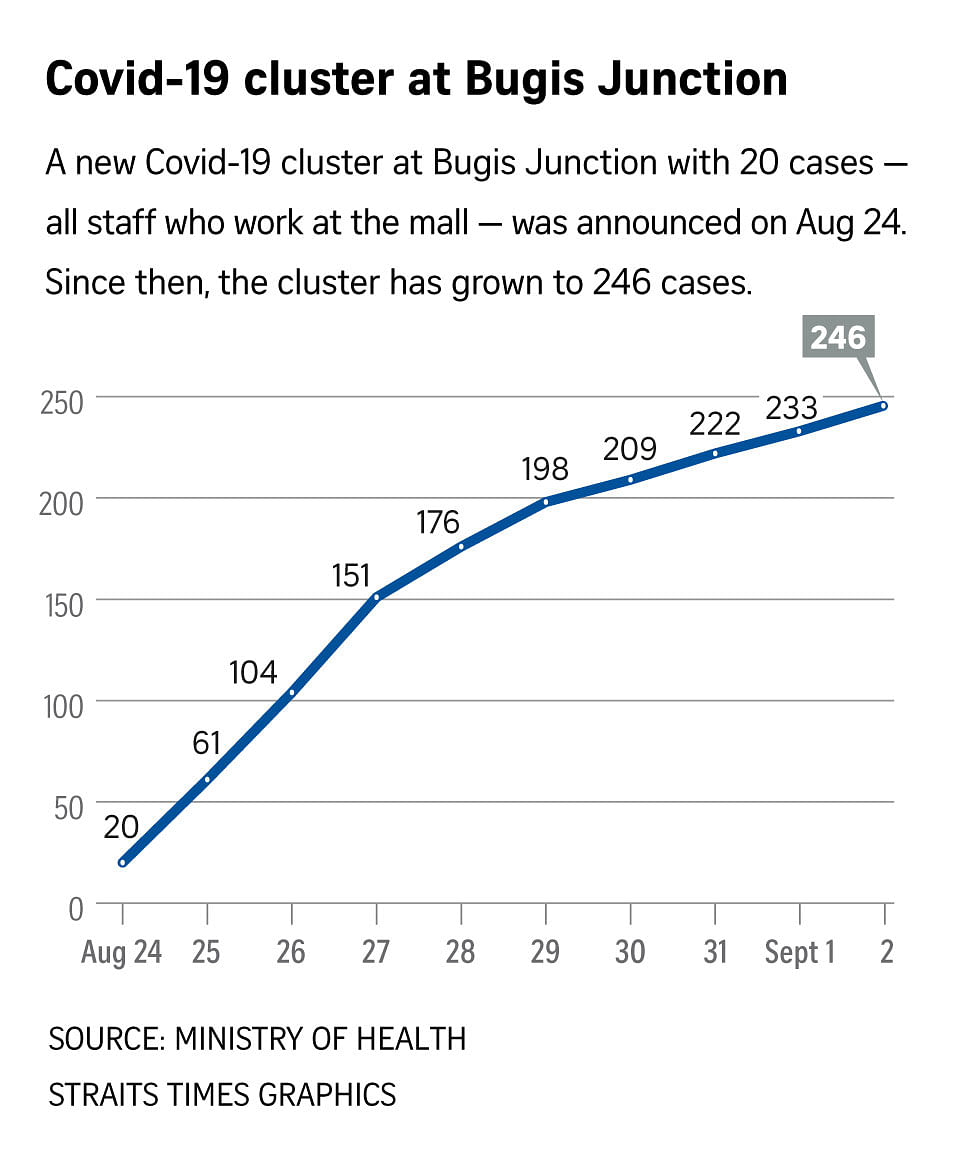Bugis Junction Covid-19 cluster may have started with infected member of public who visited mall: Kenneth Mak
Sign up now: Get ST's newsletters delivered to your inbox

The cluster at Bugis Junction emerged on Aug 24 with 20 cases.
ST PHOTO: ALPHONSUS CHERN
Follow topic:
SINGAPORE - The Bugis Junction cluster may have stemmed from an infected visitor, and then spread among employees at the mall, said Singapore's director of medical services Kenneth Mak on Friday (Sept 3).
He added that the spread among employees in the mall could be due to a lack of compliance with safe management measures, a situation that has been observed at other clusters as well.
"We're still investigating the clusters and examining how the spread may have occurred, but we think that it may have come from outside the mall, from the community," he said at a press conference held by the multi-ministry task force tackling Covid-19.
"But then, as a result of spread within the workplace, others were infected, involving the department store within the mall and other outlets," he added.
The cluster at Bugis Junction emerged on Aug 24 with 20 cases, and has ballooned to 246 cases as at Thursday. The first 20 cases were all mall staff.
On Friday morning, those working at the mall said staff at department store BHG accounted for at least 70 cases, or more than a quarter of those in the cluster.
The possible transmission from the public to employees in the mall could be attributed to "insufficient discipline in complying with safe management measures" among the employees, added Associate Professor Mak.
He said: "This is a common situation that we've noticed happening in other clusters as well, where it starts off with the introduction from the community coming in, and then the workplace, if there is insufficient discipline in complying with safe management measures.
"Then, potentially, spread can occur within that particular workplace, and this is irrespective of whether this is in a cluster occurring in a shopping mall or in other settings."
Prof Mak added that those infected within the mall could have sparked the transmission through mask-off activities such as eating, or while using common facilities such as the toilets.
Trade and Industry Minister Gan Kim Yong, co-chairman of the task force, added that it is extremely difficult to trace back to who started the transmission in the mall.
He said: "This investigation is backward looking, which means we have to investigate where the infection came from, so it is extremely difficult to determine specifically how the virus is passed from one person to another.
"We just have to look at the setting and assess what is the most likely (route) the virus had gone through.
"Probably one of the customers or employees got infected and it spread among the employees in the mall, in the department store, and it subsequently passed on to other customers, and then it became a bigger cluster."
Health Minister Ong Ye Kung, co-chairman of the task force, said that although the Bugis Junction cluster has grown, the number of new infections each day is being suppressed with timely contact-tracing efforts.
He said: "We went in, we closed the store, we contact traced, tested everybody, quarantined, and today that cluster, after a week or so, pretty much has been suppressed. Now we're at the tail end (of the cluster).
"If we want to suppress a cluster, we can."
For instance, at the start of the Bugis Junction cluster, the number of cases linked to it rose from 20 cases on Aug 24 to 61 cases on Aug 25. But the number of such cases has gone down to 11 on Wednesday and 13 on Thursday.
Mr Ong, however, said that the strategy to contain the infections in bus interchanges has to be different because it is not possible to shut down interchanges, as public transport is an essential service.
"If we close down interchanges, the whole system gets paralysed. So we are taking a longer period to trace, test, isolate, without closing down and disrupting essential services," he added.


